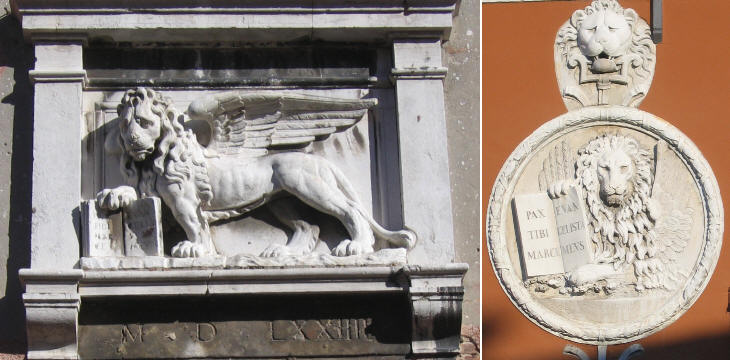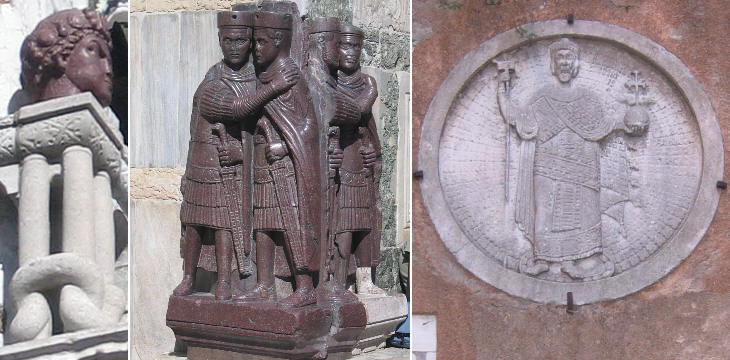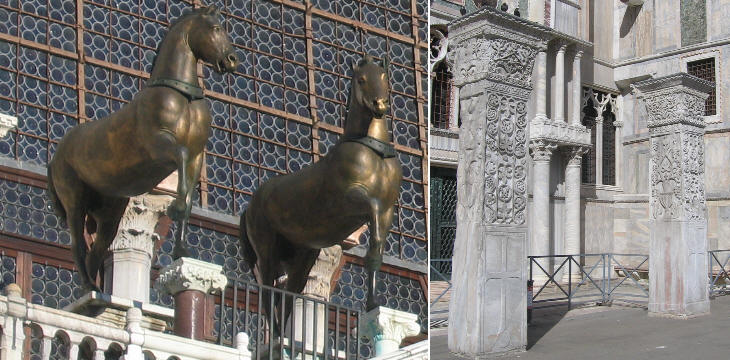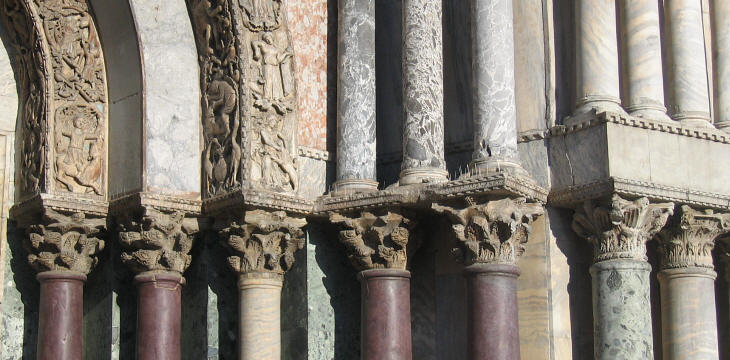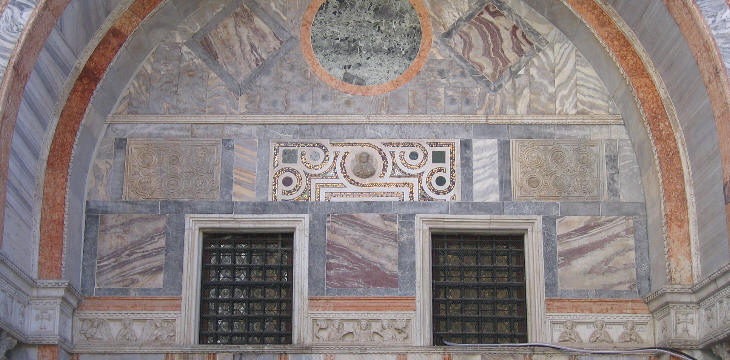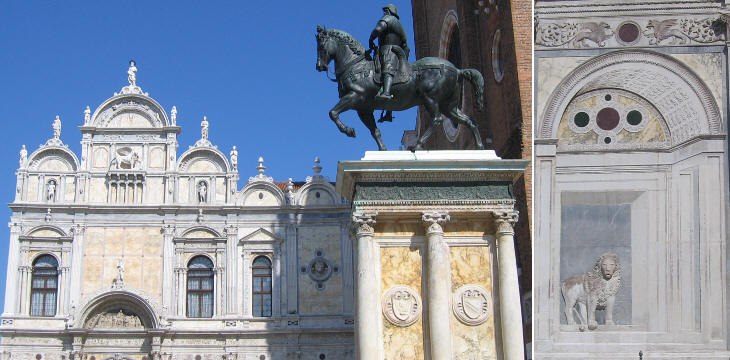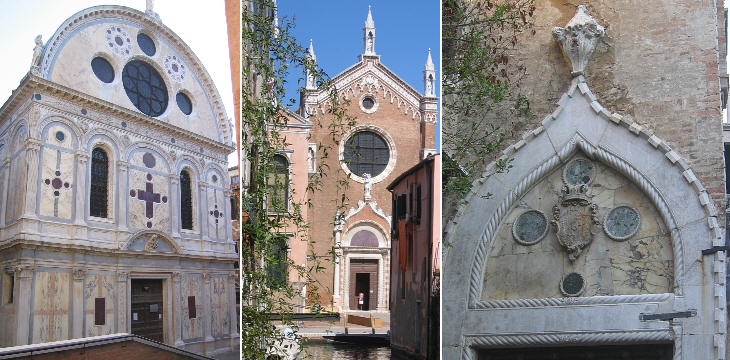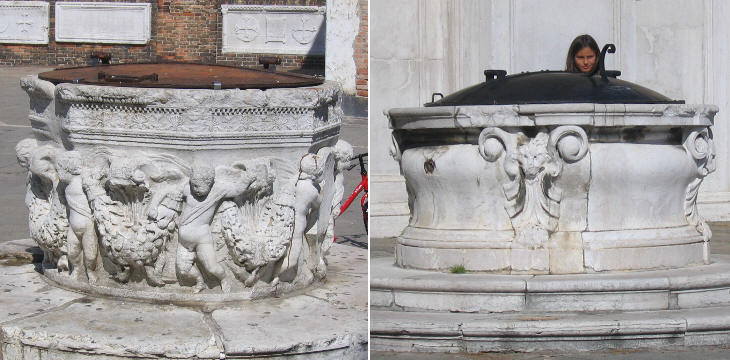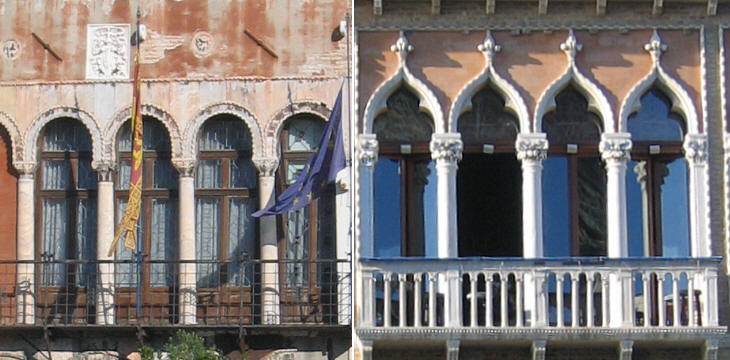  What's New! Detailed Sitemap All images © by Roberto Piperno, owner of the domain. Write to romapip@quipo.it. Text edited by Rosamie Moore. Page added in October 2007. |
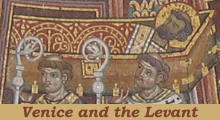 - part two: a Powerful Player - part two: a Powerful Player(mosaic showing the body of St. Mark being carried to the church dedicated to him in Venice) The church where St. Mark's body was placed and which was dedicated to him was not the cathedral of Venice, but just the private chapel of the Doge: the cathedral and the bishop's residence were located at S. Pietro di Castello, a relatively modest church at the eastern end of the city. In this way Venetian rulers kept at bay the influence of the Church. Only in 1806, after the fall of the Republic, St. Mark's became the cathedral and a palace for the bishop was built on its northern side.
Although the body of St. Mark was a holy relic of an importance comparable to that of St. Peter, the Venetians did not favour religious fervour about it. Rather than focussing on the saint by portraying his life and miracles, the Venetians gave great importance to his symbol, a lion; Egyptian Coptic icons portraying St. Mark's lion do not show the wings which appear in the Venetian iconography.
The Lion of Venice is portrayed holding a book (a reference to St. Mark's Gospel) bearing the words Pax tibi Marce, Evangelista meus (Peace to you, Mark, my Evangelist): according to tradition, while St. Mark was travelling towards Ravenna, an angel showed him the lagoon of Venice and told him he would be buried there. The traditional portrayal of the lion is called andante (walking/on the move): in some circumstances a simpler design was adopted: because in this second pattern the lion's wings resembled crab pincers, the Venetians called it in moleca (in the form of a crab). More than 2,000 reliefs of the lion were erased in 1797 after the fall of the Republic: they were regarded as the symbol of the noble families, rather than of Venice. During the XIXth century a certain number of lions were placed back on some historical buildings.
In 1204 Pope Innocent III called a crusade (the fourth one) to liberate Jerusalem; Venice agreed to carry the crusaders to the Holy Land, but in return asked them to support its candidate in a dynastic quarrel which broke out in Constantinople. Eventually the crusaders conquered that city; the Byzantine Empire was partitioned between the commanders of the expedition, but Venice managed to be rewarded by being assigned Candia (Crete), Negroponte (Euboea) and some key coastal locations such as Corone. Venetian families acquired the Cycladic islands: the Sanudo founded a Duchy at Nasso (Naxos) and the Querini established their rule at Stampalia (Astipaleia). It is not exactly known how and when all statues and reliefs portraying Byzantine emperors were brought to Venice to embellish St. Mark's and some private buildings.
The four bronze horses on the balcony of St. Mark's are replicas of those which came from Constantinople: their origin is uncertain: it is thought that they were cast at the time of Alexander the Great and later on they were brought to Rome to embellish a triumphal arch: from there they were moved to the Hippodrome of Constantinople. In 1798 Napoleon brought them to Paris where they were placed on Arc du Carrousel. In 1815 they were returned to Venice. Trophies of war embellishing Venice are not limited to those coming from Constantinople: in 1258 the Venetians defeated the Genoese and seized St. John of Acre, their outpost in the Holy Land. There they took two beautifully carved pillars; the image in the background of this page shows a detail of one of them.
Venice merchants lived in all the major ports of the Levant and the Republic controlled directly or indirectly several territories along the shores of the Adriatic Sea, so it was not difficult to arrange the gathering and shipment of columns of many different stones, including porphyry (which was regarded as a symbol of power) to decorate St. Mark's entrances.
The body of St. Mark was not the only relic brought from the Levant. In 1125 that of St. Isidore, a IIIrd century martyr, arrived in Venice from Scio (Chios). The exterior of the chapel in St. Mark's where St. Isidore was buried, shows the large variety of marbles which were available in Venice.
Scuola Grande di S. Marco, a late XVth century building, shows how the Venetian Renaissance made use of coloured marbles, which to a great extent came from the Levant.
The use of porphyry and other marbles was not limited to the large buildings paid for by the Republic, but can be found in many other churches or private residences throughout Venice.
In Venice supply of water was assured by deep wells reaching a water-bearing layer: this explains why there are no fountains in Venice; the wells however, either in the courtyards of the palaces or in the campi (squares), were all covered with fine marble reliefs: this approach can also be noticed in the Venetian territories in Greece (see a fine well in the old town of Corfu).
Late Byzantine emperors had their residence in the Blachernae palaces; although these buildings are almost lost, nevertheless it is still possible to see the narrow windows which the Venetians copied in their early palaces. Later on the contact with Gothic art led to modifying the top of the windows, but not the practice of placing them in a row.
The simple design of the first Venetian windows evolved into a very elaborate one. Even when Renaissance patterns prevailed, the practice of placing windows one next to the other was maintained. See these other pages: Venice and the Levant - Part one - The Early Days Venice and the Levant - Part three - A Cosmopolitan City Venice and the Levant - Part four - A Military Power Venetian Fortresses in Greece  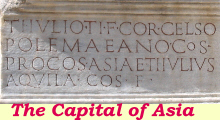 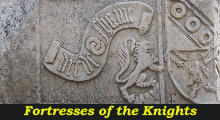 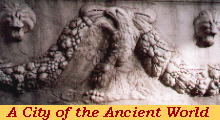
|

